In 1938, in a small town in Upper Austria, one of the many Nazi concentration camps was constructed. It was known as the Mauthausen concentration camp. It existed from 1938 to 1945. The camp was run and guarded by the SS. The people who were imprisoned here came from many countries in Europe: Poland, Russia, France, Italy, Germany, Austria and others. They were political opponents, belonged to marginalised groups (e.g. ‘criminals’, ‘asocials’) or were persecuted for anti-Semitic and racist reasons (e.g. Jews). Most of the prisoners were men, but there were also women and children.
In the Mauthausen quarry, the prisoners carried out hard forced labour. In the more than 40 subcamps (Gusen, Steyr, Linz, Ebensee, Vienna...), they were deployed in the arms industry. People lived in overcrowded accommodation. They were not given enough food and clothing, and they starved and died of diseases. SS men beat many prisoners to death, shot them or murdered them in the gas chamber at Mauthausen. In total, almost 200,000 people were imprisoned at Mauthausen and its subcamps. Half of them lost their lives.
The Mauthausen concentration camp was on a hill and could be seen for miles around. Many people were involved with the camp: they worked there, brought deliveries or knew SS men. Almost everyone knew about the death camp. Often, the SS men committed the crimes in full view of the population. On 5 May 1945, the Mauthausen concentration camp was liberated by US troops.
Here, you will read the story of a person who was connected with the Mauthausen concentration camp.
Wolfgang Sinai Adler
Text: Angelika Schlackl – Illustration: Alena Ertl
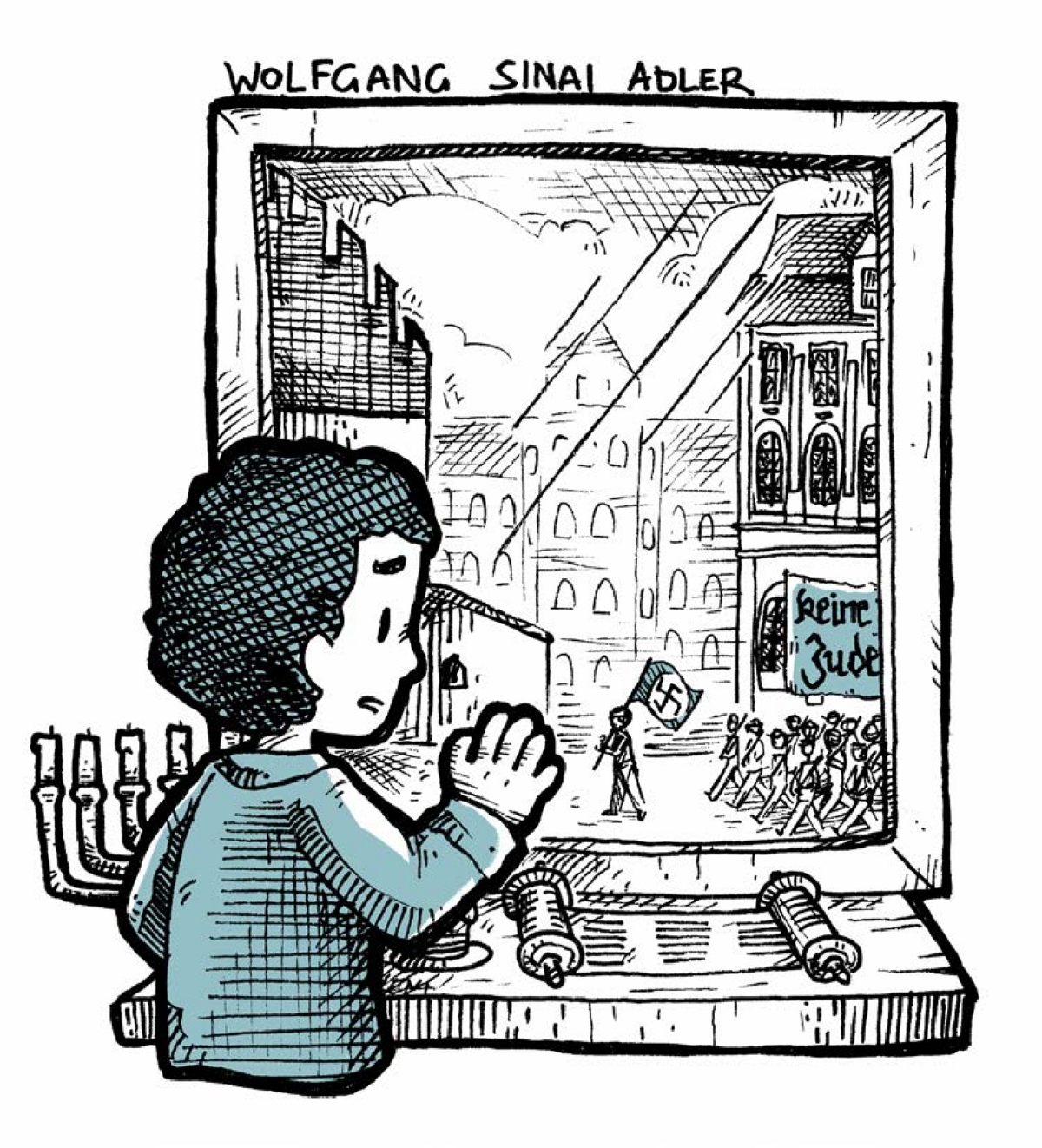
Wolfgang Adler is born in Prague in 1928, the youngest of three brothers. His family speaks German. His father is a rabbi; the Adlers are Orthodox Jews and live in strict accordance with religious laws.
In March 1939, the Wehrmacht invades Czechoslovakia. The Jews now have to wear the yellow star and signs go up everywhere saying: ‘prohibited for Jews’. The Adler family wants to emigrate but only Wolfgang’s eldest brother, Matisyahu, is able to go to Palestine. Wolfgang’s second brother dies in 1937.
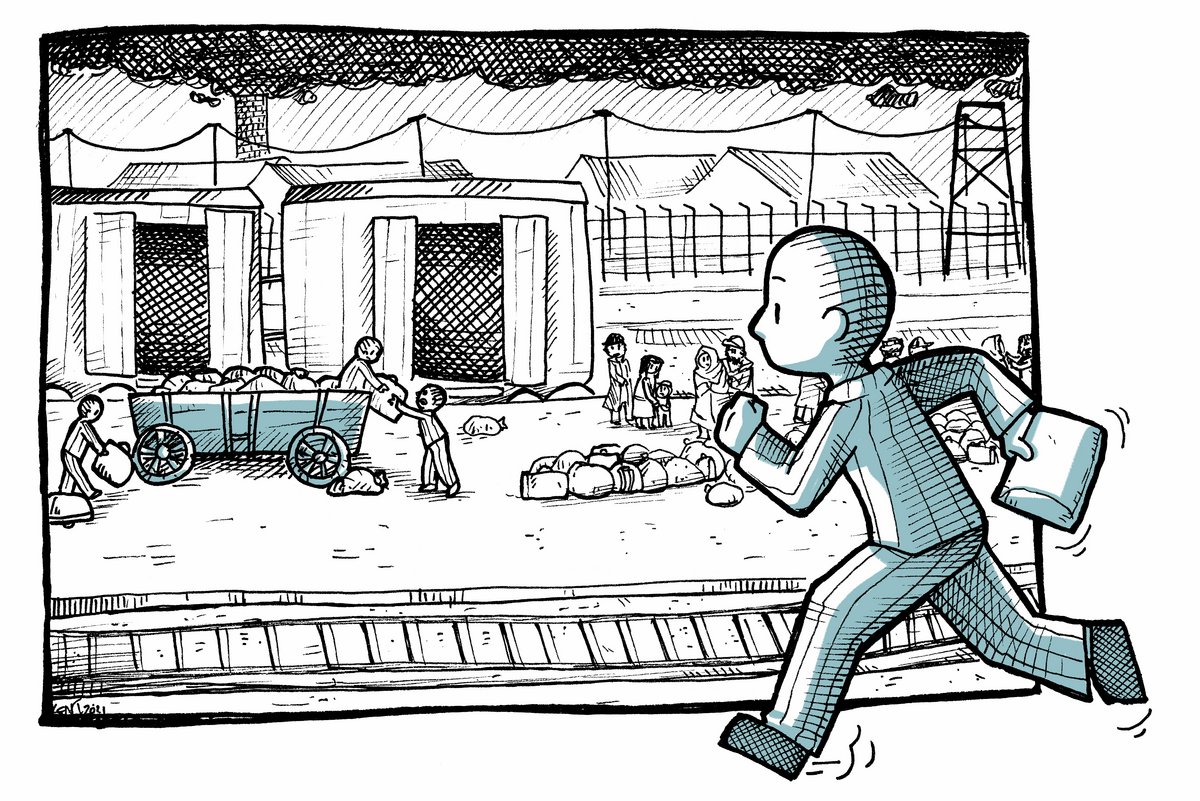
In March 1943, the Adler family is deported to the Theresienstadt ghetto. Wolfgang works in the bakery there, so can obtain bread for his sick parents, but many older ghetto inhabitants starve to death. In May 1943, the Adlers are loaded onto a train of cattle cars along with 2,000 other people. After a journey of two days and nights, they arrive at the Auschwitz-Birkenau concentration and extermination camp.
On his arrival, Wolfgang is tattooed on his left forearm with the number A1450. The Adlers are put into the Theresienstadt ‘family camp’. This area is used by Nazi propagandists to pretend to the world that the Jews are being treated well. It is shut down in 1944. The SS sends mothers with children, old people and sick people to the gas chambers. Wolfgang sees his parents for the last time.
He now has to work for the SS as a runner, distributing post. His friend Jehuda has to work in the handcart detachment bringing wood into the crematorium and disposing of the ashes of the cremated bodies. Later, the SS assign Wolfgang to looking after horses.
In January 1945, as the Red Army is approaching, the SS forces thousands of prisoners to go on ‘death marches’ to other camps. Wolfgang has to walk alongside a horse and cart. Dead bodies, frozen or shot, lie by the side of the road. For days on end there’s nothing to eat. Ultimately, the SS locks the prisoners into cattle cars that reach the Mauthausen concentration camp after a chaotic journey lasting three weeks.
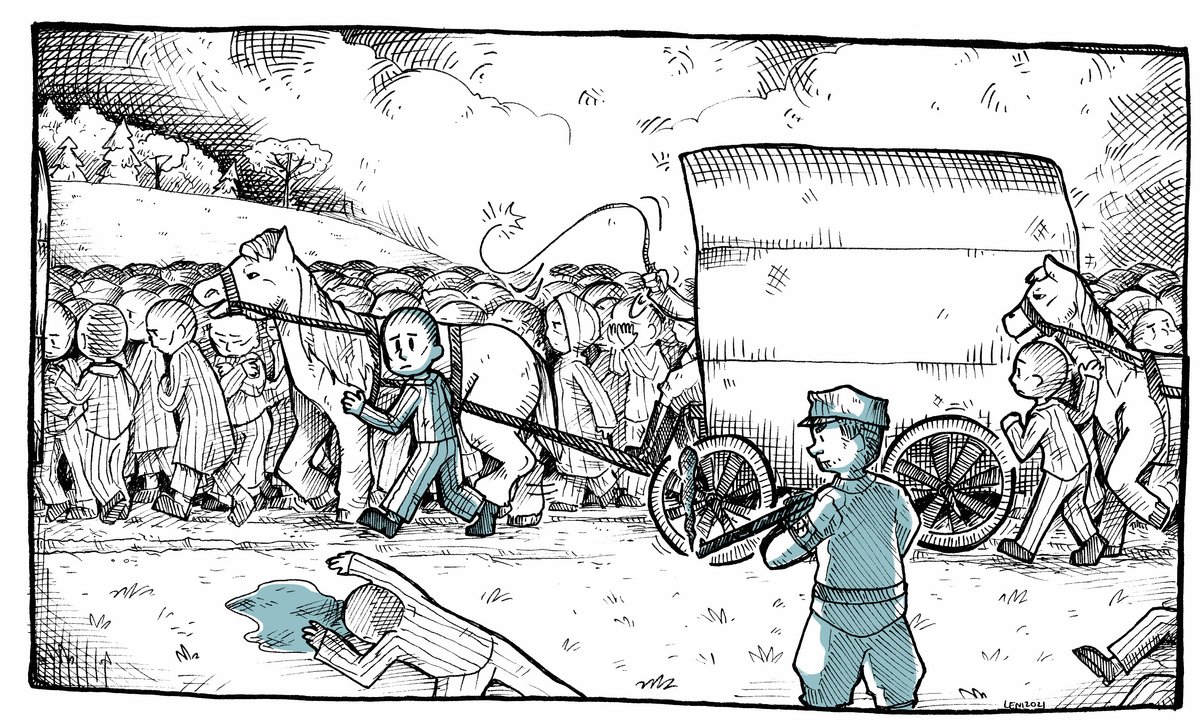
For Wolfgang, the arrival at Mauthausen is a shock. He sees dead people lying everywhere. In the showers, the new arrivals are brutally beaten by Kapos. He prays: ‘If I survive this hell, I want to spend my whole life serving God and studying the Torah!’
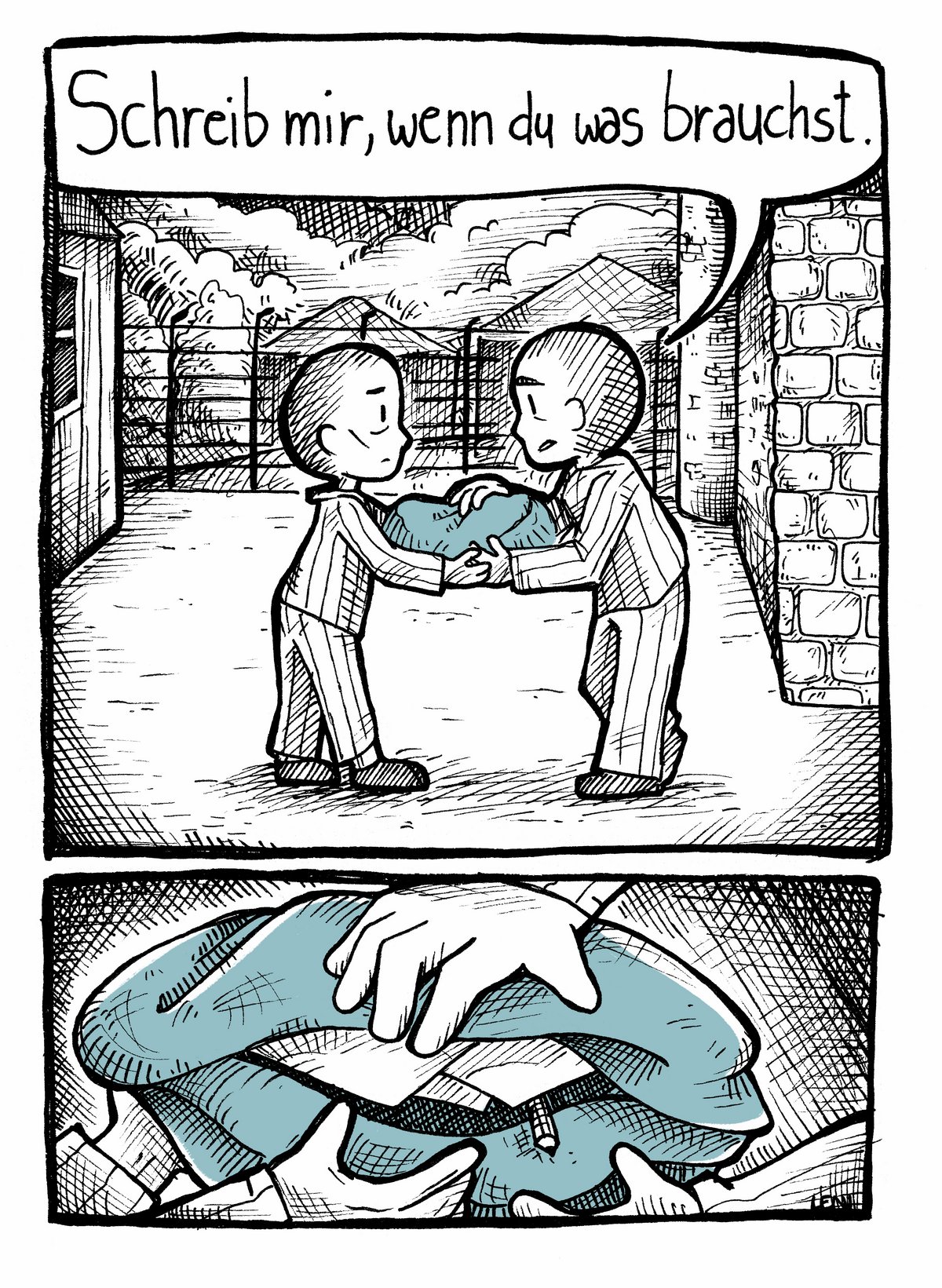
Wolfgang is more dead than alive when the Czech prisoner Alois Holub approaches him. Holub is a Communist and has been in the Mauthausen concentration camp since 1941. As a cabinetmaker, he has to make wooden boxes and wall panelling for the SS, which means he receives better treatment. ‘Lojzik’ and ‘Wolfi’ become friends. Alois ensures that soup is smuggled into Camp III, where Wolfgang is starving.
In early April 1945, the Jews are separated out from the main camp and moved to a nearby tent camp. On their way there, Lojzik suddenly appears next to Wolfi, gives him his woollen sweater, paper and a pencil and whispers to him: ‘Write to me when you need something!’
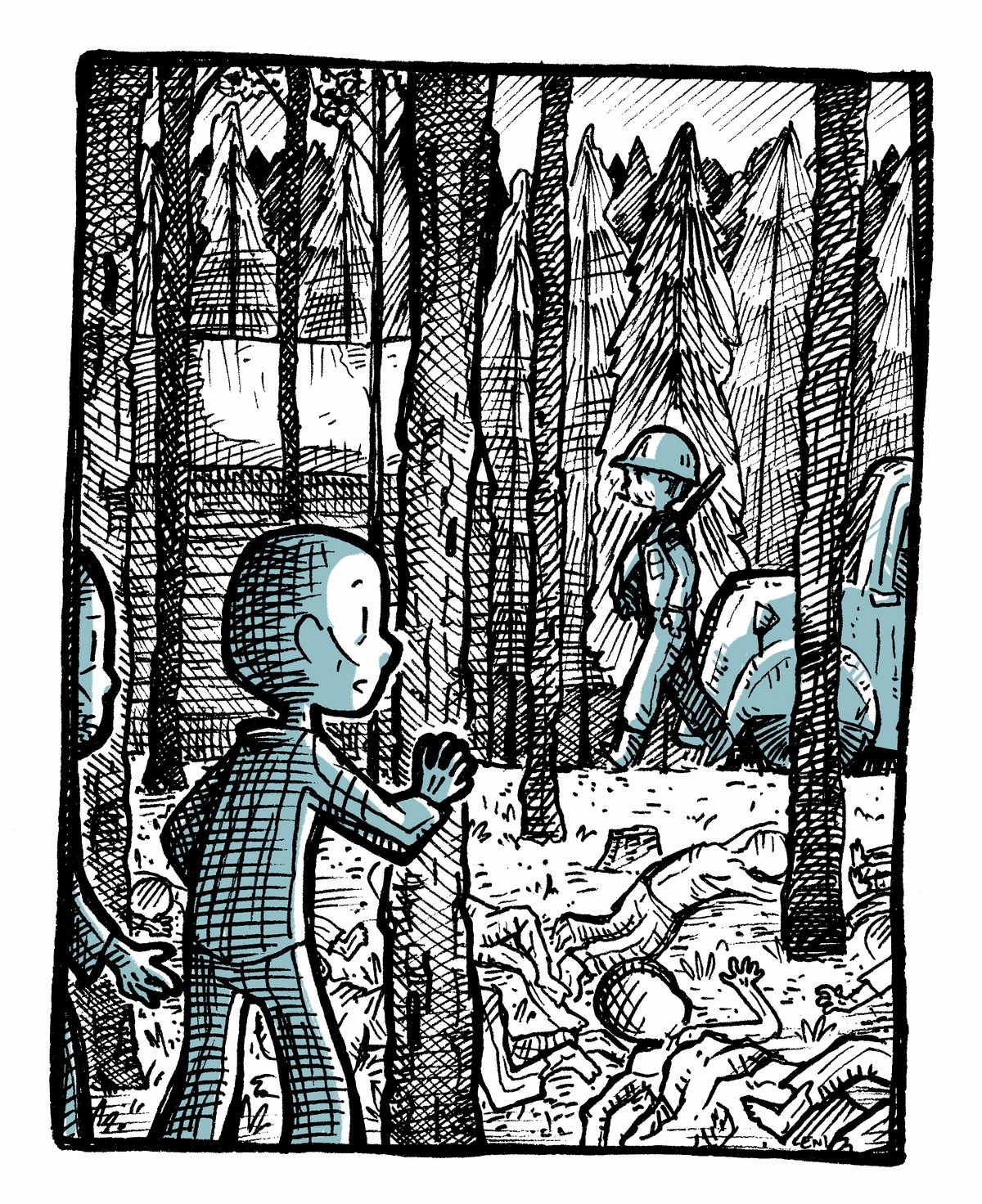
The conditions in the tent camp become worse every day. Thousands of Jews from Hungary and other nations are crammed together without food. Wolfgang has a high fever and diarrhoea. He writes to tell his friend. Lojzik gets him bread, soup, a spoon and charcoal tablets, which save his life.
Five messages to Lojzik are smuggled out of the tent camp.
On 18 April, Wolfgang writes that thousands have already left the camp. ‘Soon I’ll be one of them,’ he says. On the death march to the Gunskirchen camp, hundreds of Jews are beaten or shot dead. After 55 kilometres and two nights in the open, they arrive at ten rudimentary wooden huts in the middle of the forest, which are supposed to accommodate thousands of Jews. Two boys, Wolfgang and Jehuda, covered in lice, climb up to the wooden beams under the roof. On the ground, the living lie on top of the dead, who no one can carry out of the hut to bury them. The forest is also full of corpses.
On 4 May 1945, the SS men leave the camp because they don’t want to fall into the hands of the Americans. Wolfgang and Jehuda set off the next morning for freedom. An American military jeep brings the two emaciated boys, suffering from high fever, to the hospital in Steyr – and they survive.
Wolfgang and Jehuda return to Prague where they learn that they are the only ones in their family to have survived the Shoah. In 1946, Wolfgang Adler joins his brother Matisyahu in Palestine. Wolfgang changes his name to Sinai and becomes a respected rabbi and religious scholar in Israel. He marries twice, the second time to Deborah.
Sinai Adler and Alois Holub aren’t in contact, but the rabbi hasn’t forgotten that Lojzik saved his life in Mauthausen. After more than forty years, Wolfgang’s brother finds Alois Holub while on a visit to Prague. Shortly afterwards, Sinai Adler receives a parcel with an ornately crafted wooden box.
He opens it. It contains all the messages that Wolfi secretly sent to his friend from the tent camp in April 1945.
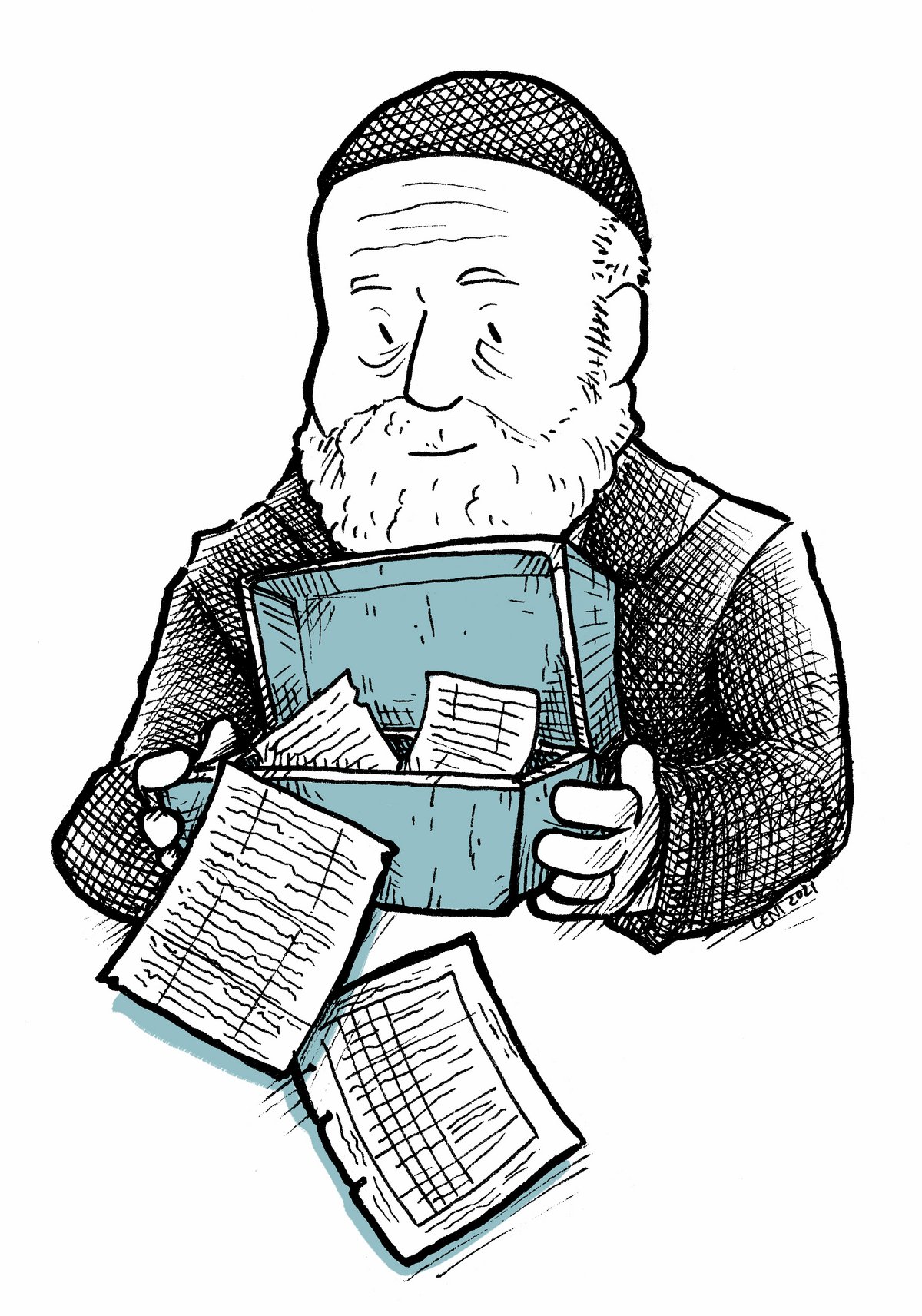
Sinai Adler ensures that Alois Holub is honoured by the Israeli Holocaust Memorial Yad Vashem in 1994 as ‘Righteous Among the Nations’. Wolfgang Sinai Adler dies in Israel in 2020.
- 1928 Wolfgang Adler is born in Prague
- 1933 30 January, Adolf Hitler becomes Reich Chancellor in Germany
- 1938 12 March, ‘Anschluss’ (‘Annexation’) of Austria to Nazi Germany
- 8 August, construction starts on the Mauthausen concentration camp
- 1939 15 March, the German Wehrmacht invades Prague
- 1 September, start of the Second World War
- 1943 The Adler family is deported to Theresienstadt
- The Adlers are transferred to the Auschwitz-Birkenau concentration camp
- 1944 His parents die in Auschwitz-Birkenau
- 1945 Death march from Auschwitz to the Mauthausen concentration camp
- Wolfgang meets the political prisoner Alois Holub
- Death march from Mauthausen to Gunskirchen
- 5 May, Mauthausen concentration camp is liberated by the US Army
- 8 May, Nazi Germany surrenders; end of the Second World War in Europe
- 1946 He travels by ship to Palestine and goes to university in Hebron
- 1948 14 May, founding of the state of Israel
- 1994 Yad Vashem honours Alois Holub as ‘Righteous Among the Nations’
- 2020 Wolfgang Sinai Adler dies in Israel
Further reflection in groups...
Wolfgang was held in various camps. Find examples in the text that show what his everyday life there was like.
In May 1945, after years of fear and persecution, the 16-year-old Wolfgang is liberated by the Americans. Think about the feelings and thoughts Wolfgang might have had when he was liberated.
Wolfgang’s friendships with Jehuda and Lojzik are very important to him. They last for decades after the end of the war. How can friendships help people in difficult situations?
On your visit to the Mauthausen Memorial, you’ll see many different monuments and memorial plaques. Find out which ones have been put up in memory of Jewish people.